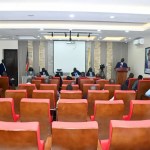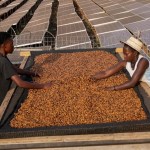(JUBA) – The Bank of South Sudan has announced a plan to print additional currency in a bid to ease the ongoing cash shortage that has delayed salary payments to civil servants and worsened liquidity conditions across the economy.
Speaking before the Transitional National Legislative Assembly’s Finance and Economic Planning Committee on Monday, Central Bank Governor Dr Addis Ababa Othow confirmed that the move is an urgent short term measure to address growing demand for liquidity. He noted that the printing of money would allow the government to meet its immediate obligations, including paying public sector workers.
“In the short-term plans, we have made it very clear that there is an urgent need for us to print money just to meet the high demand for liquidity,” said Dr Othow in remarks broadcast on the South Sudan Broadcasting Corporation (SSBC).
In response to mounting pressure to find more lasting solutions, Dr Othow also announced the formation of a special committee headed by the First Deputy Governor to identify sustainable long term strategies for currency and cash flow management.
“We have already formed a committee to look into a sustainable, long lasting solution for cash management,” he added. “At the same time, the bank is now championing what we call the National Payment Strategy.”
This National Payment Strategy, still under development, is expected to include reforms aimed at digitising payments, improving money circulation, and reducing the government’s reliance on printing more cash to fill liquidity gaps.
Meanwhile, the Chairperson of the Finance Committee, Michael Ayuen, confirmed that his committee is exploring various policy options to stabilise the economy. He said the committee is studying international best practices to help shape evidence-based recommendations that could guide South Sudan’s fiscal and monetary decisions.
“We were able to explain to the committee a range of ways to address this situation, including policy measures,” Ayuen said. “A committee is already working on researching the best practices around the region and the world, and will generate recommendations that will form the basis for the way forward.”
The urgency of these discussions reflects the growing frustration among civil servants and state employees, many of whom have experienced months long delays in salary payments. At the same time, the national currency, the South Sudanese Pound has continued to lose value against the US Dollar on the parallel market, further reducing purchasing power for ordinary citizens.
The Central Bank’s move to print money has triggered debate among economists and financial analysts, with some warning that excessive printing could drive inflation even higher unless carefully managed and matched with fiscal reforms.
South Sudan’s economy remains heavily reliant on oil exports, has been repeatedly disrupted by global price shocks, internal instability, and delays in production. Experts say reforms in cash handling and public finance systems are urgently needed to address structural weaknesses and ensure that monetary interventions are not short lived.
Summary – Currency Printing Context
| Key Issue | Details |
|---|---|
| Short-term Solution | Print more SSP to ease liquidity |
| Purpose | Address delayed civil servant salaries |
| Exchange Rate (July 2025) | SSP 4,600 = USD 1 |
| Committee Formed | Headed by First Deputy Governor |
| Long-term Strategy | National Payment Strategy under development |
| Risks Noted by Economists | Potential inflation and currency devaluation |


















































